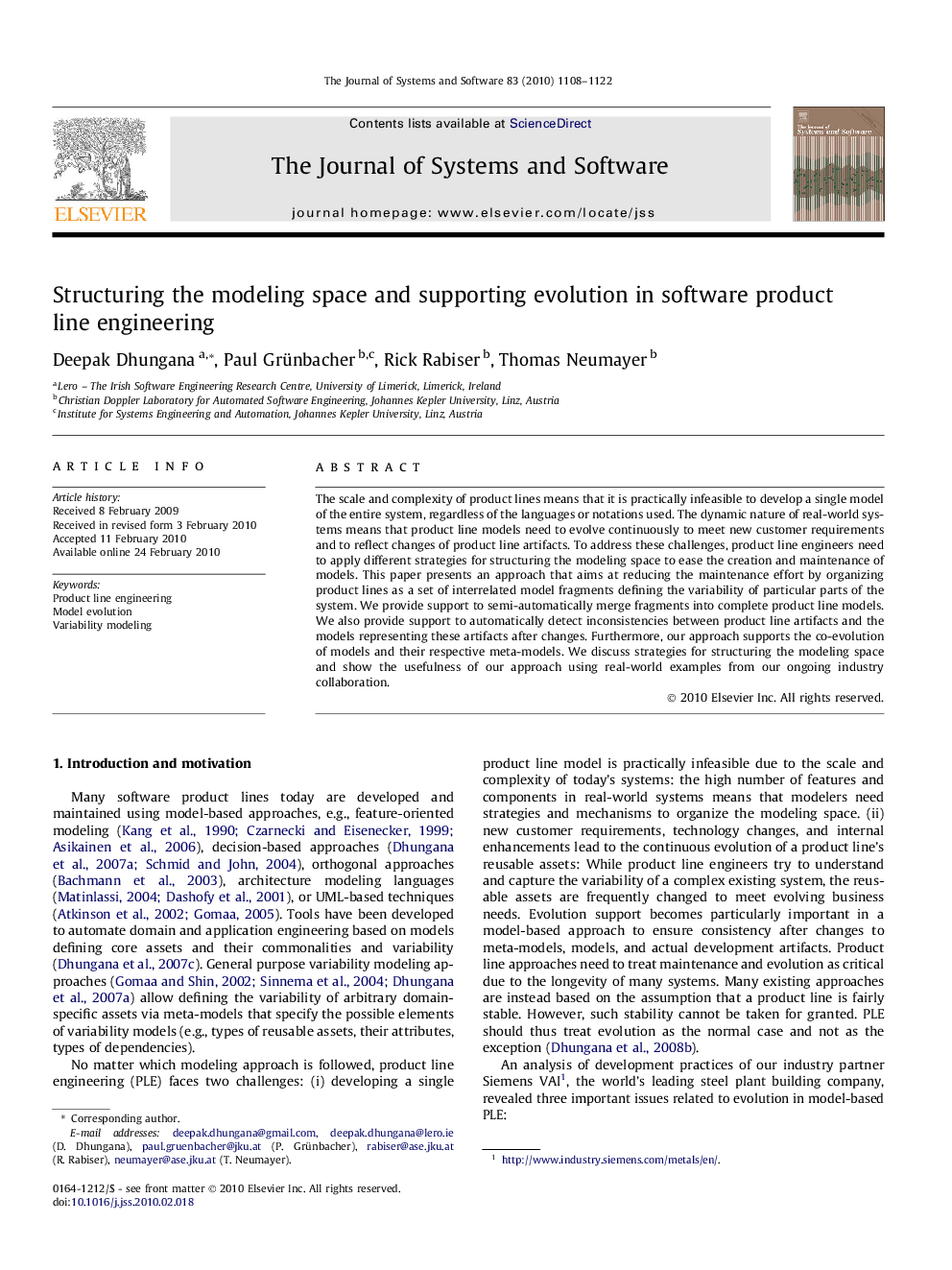| Article ID | Journal | Published Year | Pages | File Type |
|---|---|---|---|---|
| 462089 | Journal of Systems and Software | 2010 | 15 Pages |
The scale and complexity of product lines means that it is practically infeasible to develop a single model of the entire system, regardless of the languages or notations used. The dynamic nature of real-world systems means that product line models need to evolve continuously to meet new customer requirements and to reflect changes of product line artifacts. To address these challenges, product line engineers need to apply different strategies for structuring the modeling space to ease the creation and maintenance of models. This paper presents an approach that aims at reducing the maintenance effort by organizing product lines as a set of interrelated model fragments defining the variability of particular parts of the system. We provide support to semi-automatically merge fragments into complete product line models. We also provide support to automatically detect inconsistencies between product line artifacts and the models representing these artifacts after changes. Furthermore, our approach supports the co-evolution of models and their respective meta-models. We discuss strategies for structuring the modeling space and show the usefulness of our approach using real-world examples from our ongoing industry collaboration.
